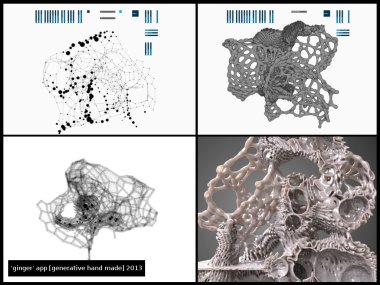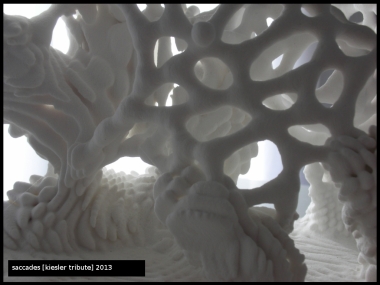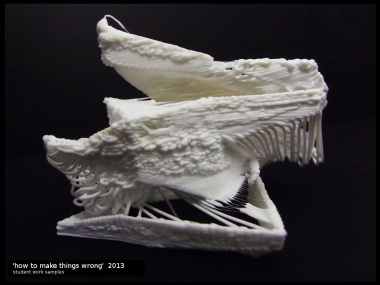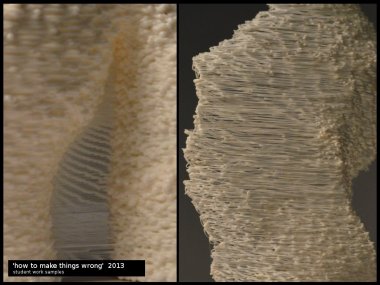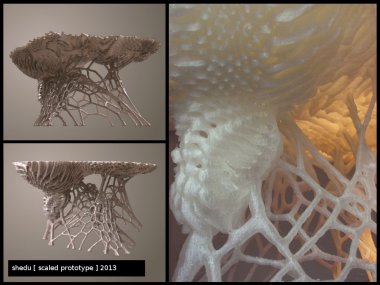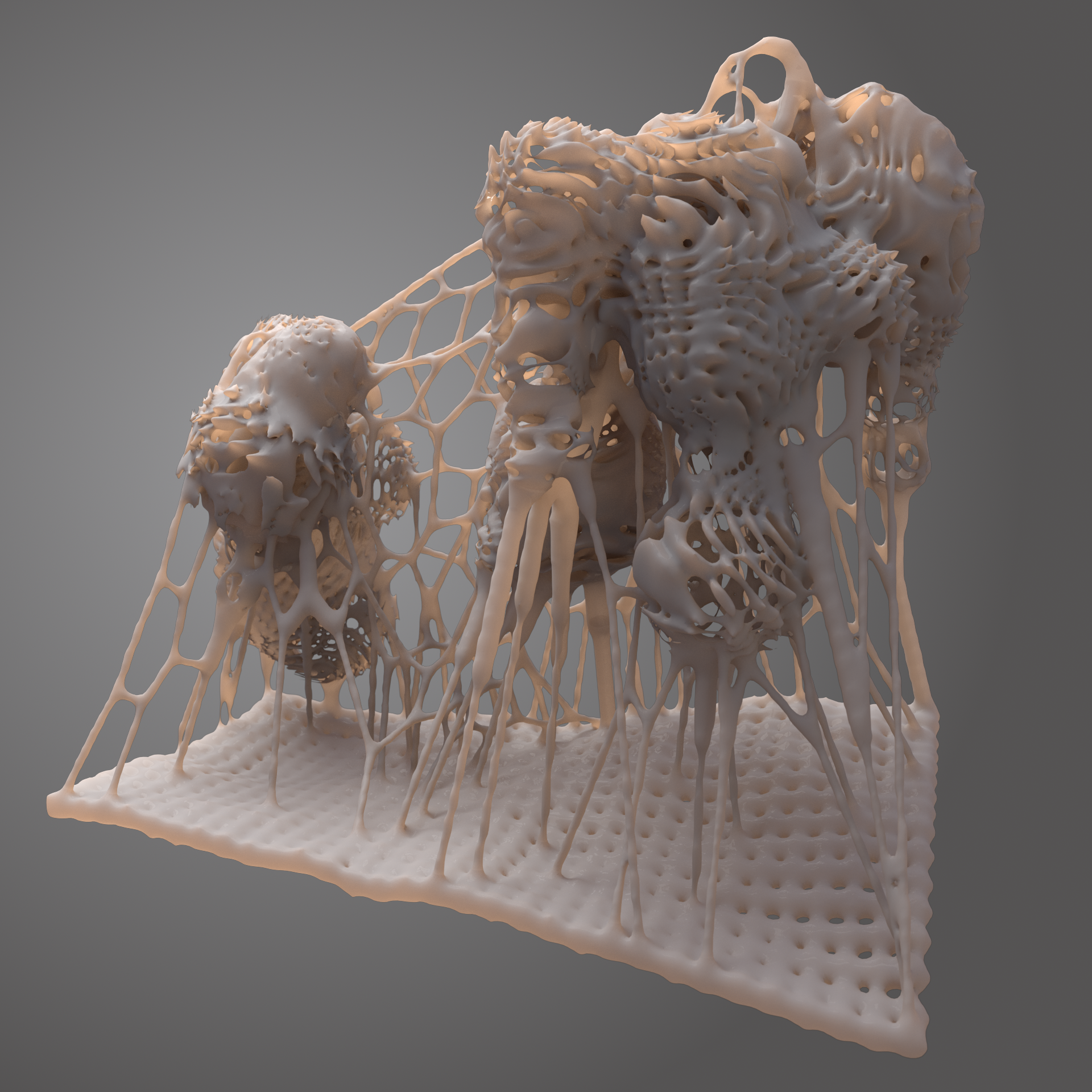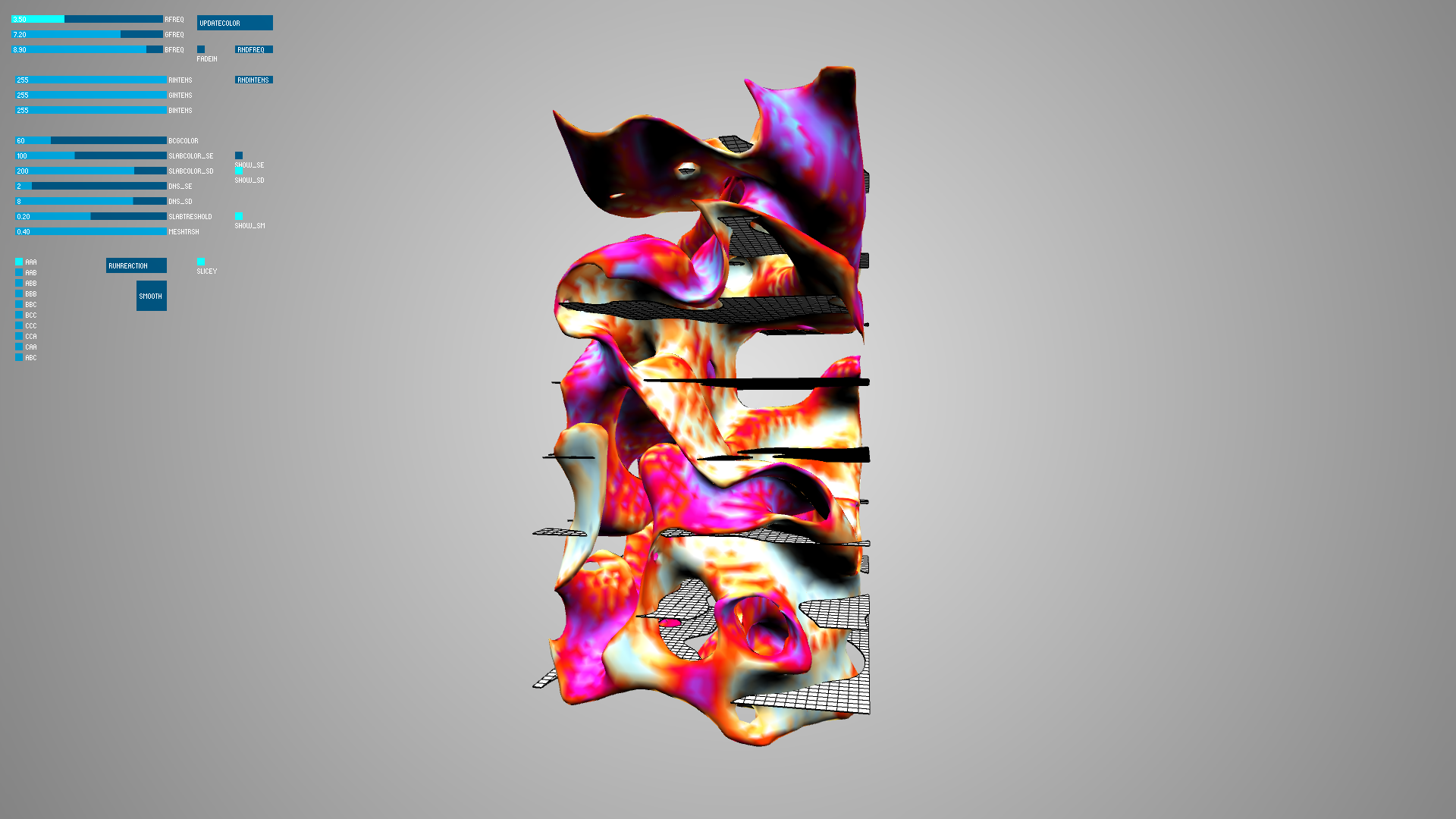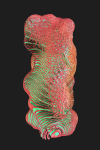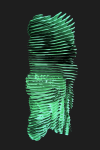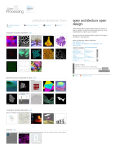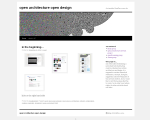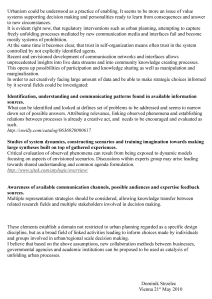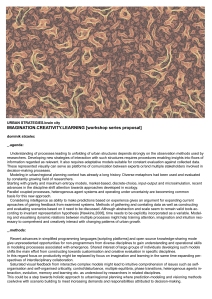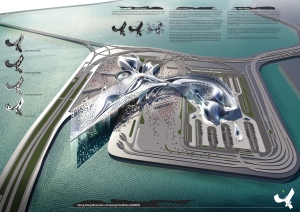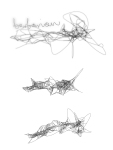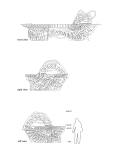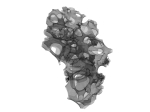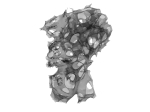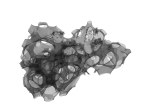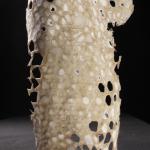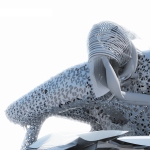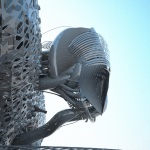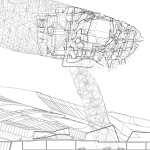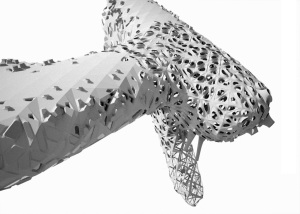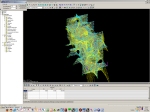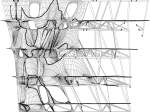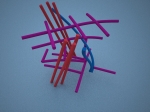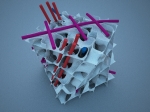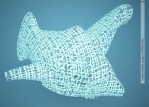this site is an archive of my work. current website: https://www.wiedenski.org/
saccades [ kiesler tribute]
February 20, 2014my humble tribute to Friedrich Kiesler and at the same time a study of several, possibly non-trival approaches to architectural drawing:
using an interactive generative-hand sketching app [ ginger 2.0 ]
and immediately turning it’s rough, unprocessed output into first-person perspective interactive walkthrough,
which in turn records visitors paths together with sets of points upon which their gaze rests.
visualising these records becomes an intricate map of the not-yet-existing environment perceived and navigated through.
this project’s output consists of series of apps, data visualisations as high quality prints and 3dprinted models.
please check this flickr set for better quality images
thanks to Sahand [ Department of Adequate Images ]
broken tool
February 18, 2014“after internet, abuse could become a default approach to technology. to technological means of representation in particular.
ubiquitous amateur extruder machines may be regarded as dull interfaces between virtual junk and plastic debris. on the other hand they offer cheap and easy access to direct material manipulation and can therefore be turned into monstrous yet valid bypass between desire of saturation and limited bandwidth of digital modeling, delivering multiscale depth beyond the flat screen.”
or simply: it’s an established method of any avant-garde to appreciate media for what they can become.
last december workshop for Urban Strategies Postgraduate Program @ dieAngewandte with Alext Karaivanov
above is a screenshot from the app/interface i made in order to explore generative manipulation of makerbot gcode
below few student work samples
check their blogs for more.
generative hand-made
November 19, 2013while waiting for proper documentation of the recent work, here is a short description of the general trajectory and current focus:
generative hand-made is an ordering principle and design method appreciating immediate, intuitive decision making enabled by interaction with dynamic, generative design environment. refering back to surrealist automatic [iterative] drawing and engaging designer in a focused conversation, it gains consistency by strategicaly leaving certain parameters as indeterminate while following internal, systematic constrains of the design environment.
this definition is still rather blurry unfortunatelly. will improve.
examples below were created with ‘gaudism’ and ‘ginger’ apps
cuffs are an early but promissing attempt to collaborate with amazing goldsmiths at HENWOOD arcane
before i can publish better pics, the 3d file can be looked at in the browser here
ginger 2.0
May 28, 2013along with other ‘speculative apps’ [check this post for more info] comes “ginger”. it’s a mixture of 3d feedback drawing and browsing for patterns within comb-like filtered noise space [similar to gaudism ]
this preview focuses on the rendering method i developed recently – per vertex fake ambient occlusion used for shifting local hue, saturation and brightness values. at the moment almost ridiculously slow, but gives me hope to introduce techniques of creating depth borrowed from watercolour painting.. kind of.
and just to keep the proper amount of geekiness – here is a screencast from the app:
much more on the ‘speculative apps’ topic very soon
gaudism
March 17, 2013Gaudism is about my two catalonian idols [rather obvious…] and another take on ‘shape as record’ methodology i’m developing over last two years. This generative-hand-made hybrid lets one playfully explore catenary structure principles as well as browse through interferences of field intensities. These behaviors are recorded as a shape.
here is a screencast from the app. notice different masses indicated by circles of different sizes.
https://sketchfab.com/show/7DEBA9IPoF8o3d4De668L9HdzDC
and here is a more refined, interactive 3d model
credits: this work is heavily inspired by Axel Kilian’s catenary project [ http://designexplorer.net/newscreens/cadenary/june2/index.html ] and would not be possible without Pierre Charalambos and Karsten Schmidt
fusion
June 10, 2012yet another take on my long term obsession of multiple generative processes creating a fused body, while maintaining their respective specificities on the peripheries. although there are no preconceived organs: no spines, no lungs, no heart – observing carefully one can notice localy repeating organisational patterns. did architecture acknowledged spectralism already?
these are some pictures from last years show @Sternstudio in Vienna.
more: related flickr set
snow crash
February 26, 2012further exploration of effects resulting from scale alteration: oscilating patterns of bz reaction as well as color interferences become more readible. it is as well evident, that this is just a sample within a bounding box.
speculative apps
February 25, 2012architecture discourse is traditionally shaped by drawings and critical writings. what happens, if they are interactive and easily translatable to the fabrication maschines code? what if they’re source is open, so that anyone can contribute? i’m currently working on a series of little design apps, focusing on specific aspects of the architecture i would like to see built… eventually. these are not made for any particular project, but rather for playfull exploration. in many cases they will be remixes or fusions of other designers work and therefore credited as such. i would love to discuss ideas about space this way.
first one happened to be about ‘saturation’-my subsitute for ‘detail’,’ornament’ or ‘articulation’. it’s neither ‘surface treatment’, nor pure texture. i’m excited about phenomenal intesity similar to Snow Crash 🙂
credits and technical info: ‘saturation’ is a remix of Tommaso Casucci‘s ‘3d BZreaction’, which in turn is a quick mod of Alasdair Turner’s ‘BZ reaction’. i merged it with a little simplified version of my former ‘fusion’ codes and added ‘floorslabs’ using Shane Nelson’s ‘scalar field polygonisation‘.
byzantine geology
February 15, 2012emerging building techologies seem to bring architecture back to it’s geological roots. it’s made for peer-troglodytes appreciating the byzantine beauty of digital sedimentation.
technical info/credits: obj exporter by muehlseife.de, luxrender, blender, toxiclibs
hackerspaces//superheroschools
February 8, 2012taking the idea of open-source communities becoming visible and contributing to the large scale material culture a little further:
if we can create objects, movies and small scale instalations entirely based on microdonations, would it be possible to seriously think of crowd-financed buildings? distributed investments oriented towards community goals?
maybe there is already a totaly new economy enabling architecture and therefore completely new audience… or the other way around.
if architecture mirrors existing power structures and creates spatial order representing socio-political hierarchies, it’s worth investigating how could it look like and how would it be made in these new circumstances.
this is a first sketch for a large hub in berlin, based on noInput sketches and fusion series shapes. refering to Woods’s “berlin free zone” project, it proposes diverse, yet indetermined spaces requiring creative effort in order to be inhabited. one cannot move in with old furniture:)
more photos on flickr. this is a beginning of a series. comming soon.
freestyle wandering maschine
October 30, 2011Driven by immediate surrounding, little by little, machine deposits material while sensing and moving within it’s territory. Traces left by it’s passing alter the landscape it operates within step by step. Instant decisions solidify, aggregate and therefore shift or constrain its possible future trajectories. Moving away from industrial precision towards almost primitive, still mediated digitally ways of constructing and articulating the space poses a question wether material traces of networked culture have to be necessarily highly technological. Matter, whether tangible or virtual becomes a medium of record. Since there is no other blueprint than the behavior itself, resulting shapes gain their specificity from tool resolution, medium fidelity and saturation of generative processes leaving them as traces.
technical data:
circular array of photoresistors enables the maschine to detect differences in light intensity below it. Infrared sensor and a sonar allow it to position itself within topography of the landscape it creates.
all movement is achieved by three dc motors controled by arduino board [note, that there is no other feedback about position, then reading from the landscape – no stepper motors like in cnc ], three mercury switches are used to maintain vertical orientation.
simple pathfinding algorithm is used to make decisions about movement direction. trajectory simulations were initialy developed in processing [below]
material: aluminum can contains wax heated up by the torch below it. transparent plastic container carries styropor balls, which are released by servo-controlled mechanism attached at the bottom.
traces: as an effect, maschine behavior – reaction to light patterns it ‘sees’ is recorded and serves as it’s own external memory.
developed with Galo Moncayo [ http://galomoncayo.net/ ] as a part of our thesis project [check p.17]. exibited @sternstudio and MAK “essence show”
new version on the way…
noInput
March 29, 2011mistakes in communication, compression glitches and all sorts of digital errors might be regarded as failures,
but looked upon carefully they unfold generative and imaginary potential.
inspired by Tsuyoshi Kusano, Dali’s late experiments [Tuna Fishing] and Marko Ciciliani’s music.
women from willendorf
March 1, 2011this pretentious title indicates the general direction of further research on shape as record of field conditions.
it’s a tendency to move away from industrial-design precision towards seemingly archaic, still mediated digitally ways of production and articulation of space. saturation or detail in this case results from specific tool/machine resolution- here simulated by pushing voxel space towards it’s capacity limits resulting in glitches and repetitive patterns.
noisenoise
January 25, 2011browsing through recursive noise space and exploring glitches in the new volumeutils.
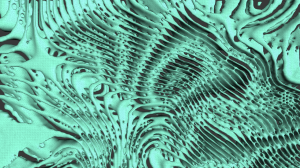 + some screenshots from the app used to search for interesting settings to be used in the time-extruded version.
+ some screenshots from the app used to search for interesting settings to be used in the time-extruded version.
parameters are responsible for noise scaling (both dimensions + change rate) as well as contour thresholds.
aLittleBitMore
December 15, 2010trying out functionality of o_a_o_d initiative, while working on some issues of my thesis project.
surreal potential of generative techniques in architecture is definitely underestimated.
shape is an isosurface around multiple particles moving in the perlin noise space. paneling(:)) scale and color results from the field characteristics as well. even though it’s rather cliche: agents, fields,panels etc, i think it’s nice to interact with…
aLittleBitMore refers to early practice of transparency and code sharing started most probably by Marc Fornes in 2005 and then followed by very many designers and students. What it became recently seems to be a sign of very natural inertia of such systems. each follower tries to follow other followers. as a result there is a lot of researchers investigating exactly the same thing: how to make panels on nurbs surface… no offense, i’m part of it.
it would be desirable to go a bit beyond this stagnation. seemingly there are related conclusions that people make globally resulting from exposure to the same stimuli: music, movies, software somehow align trajectories of designers thinking. seeking uniqueness in that homogeneity becomes rather fruitless. What stays truly unique is the immediate context each of designers operates within. family, friends, local connections that can result in small commissions. deep knowledge about own territory resulting from long term observation that cannot be compared to browsing Mumbai climate data from London…
culture of sharing design methods connected with linking back their material results can not only help finding applications for crazy amount of investigations that currently stay only as pictures. it can offer feedback for designers, making them lead real researches. furthermore it can inspire communities to use fresh design methods…
a lot of people currently talk about open design or work on systems enabling it. that’s why i’m so optimistic about it.
shape/memory#4
October 27, 2010
conclusion of this exercise: well known elements of architectural vocabulary like stairs, ramps and floors might be regarded as specific “stable” situations in a generative process. now it would be great to build a machine that would leave traces like that…
toxiclibs showreel 2010
October 13, 2010toxi makes one more step towards redefining how architects [and other digitally-creative people] might work very soon. tiny but beautiful.
shape/memory #2
August 29, 2010recording CA unfolding with time as z-axis. these are not illustrations to Meyrink’s famous book:) but ambition they represent seems to be tragic in a very much related way.
again thanks to toxi.
aggregations
August 14, 2010my current interest in straightforward modularity. i would like to push it towards more diversity in scale, so kind of recursion i suppose + some more sophisticated use of resulting symmetries. and then there is a very interesting question of using same shapes set but with material density as a variable. images above show assemblies of 4 different modules. should we call it soft brutalism? (thx Reiner)
shape/memory
June 20, 2010 one of my obsessions: linking what i learned from my masters ( Masahiro Miva, toxi, S.Lem) and imagining ways of constructing (both conceptually and physically) inhabitable environments.
one of my obsessions: linking what i learned from my masters ( Masahiro Miva, toxi, S.Lem) and imagining ways of constructing (both conceptually and physically) inhabitable environments.
form is understood as a record of a game between collaborating individuals.hope that leads towards more efficient understanding of formal activities then the current, representation based approaches.
BCL workshops running
May 27, 2010Hong Kong Porn
May 20, 2010Recent collaboration with Steven Ma. We are an odd couple i have to say… 2nd prize… anyways:)
Competition results here.
team:Steven Ma (leading member), Wendy Fok, Dominik Strzelec
barbarian
March 11, 2010
last year exercise. bar for crazy Angewandte parties that somehow don’t take place anymore. inspired/generated by autonomous agents trajectories.
with Sille Pihlak
xmass
February 8, 2010
last december in lookAround workshop. these are simple machines we did during arduino tutorial. each one reacts slightly differently to its sensory inputs [vibration and light] and stimulates its neighbors to react in their own ways.
video by Johan Tali
surrealist biology
December 10, 2009
study of the behavior of an imaginary ecosystem: schelling’s model leaving trace[drawing map]. brightness value triggers expansion [agent system]. it’s a study of system dynamics similar to Batty[2007]. i just wouldn’t search for relevance of such simulations in their measurable properties. instead they are great to feed planners imagination and/or understanding.
this animation is a part of investigation of systems behavior, hopefully leading towards creative and direct urbanism.
fluid power.facade behavior
October 20, 2009study of a changing facade pattern. building skin is meant to be its dynamic thermal mass [water-filled elastic containers]. process of thermal regulation [internal and external heat gains redistribution] becomes an important aspect of building form. would it be possible to generalize this approach?
fluid power
October 20, 2009
renderings: 70’s comeback+zbigniew oksiuta‘s madness+digital error study
photos: physical model studies – flexible, bending tower, tensegrity structure inside of a concrete shell, facade.
turkish delight
October 16, 2009
pushing rhinoscript towards almost ridiculous performance:
1.input geometry[maya-made shape] gets voxelised
2.decisions about program distribution are made
3.internal organization is created upon the voxel structure
4.output of the system is a model with adjustable level of saturation
with Julian Fors and Jan Gronkiewicz
published in AD Exuberance
voxelizing the fish
October 16, 2009
study of possible performances of a homogenous folded space. and then application: trying to inhabit the dinosaur-fish.
explanation of the procedure. shape-pointcloud-set operations-voxels-shape interpretation.
since voxelisation process is recursive in this case, there is an option to use oc-tree like addressing instead of sets.
i wouldn’t treat it to serious though…
how to make things with words
October 16, 2009that was a lot of fun (with Galo) and a real struggle (with Roche). metaphor within metaphor within metaphor that’s what it is… i really love fairy tales, but i guess i’m not cynical. more about this project here.
with Galo Moncayo



